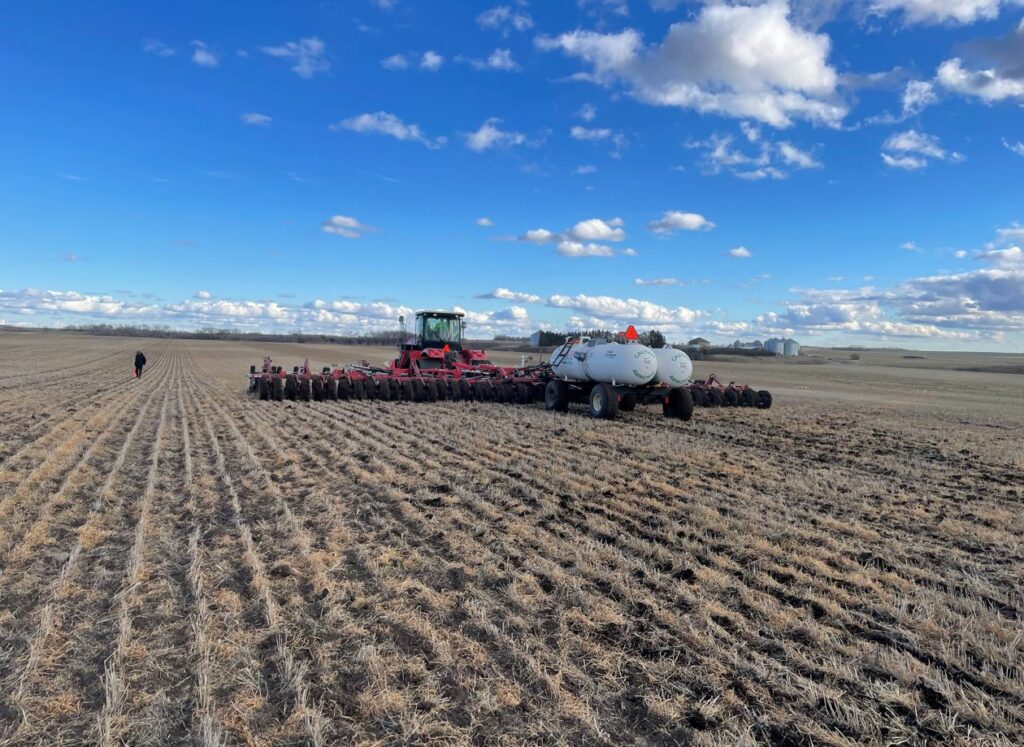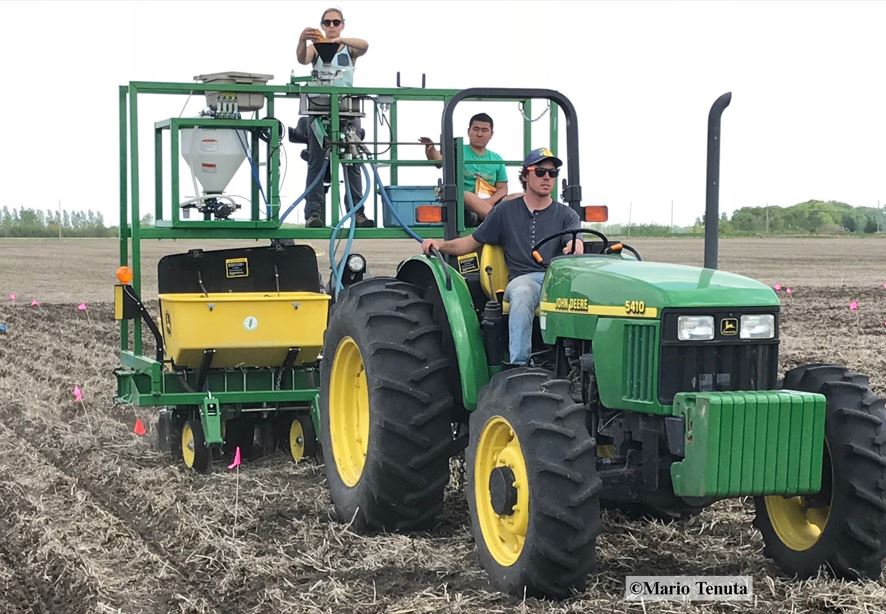Dr. Mario Tenuta looking for the 4R edge
How stewardship practices balance productivity and emissions reduction
About six years ago, Dr. Mario Tenuta kickstarted conversations with key stakeholders about how to promote 4R nutrient management. The University of Manitoba soil scientist was interested in how the 4Rs – using fertilizer at the right source, rate, time and placement – could drive sustainable crop production by reducing nitrous oxide (N2O) emissions without compromising crop yield and productivity.
Tenuta’s vision and groundwork saw the creation of the Industrial Research Chair in 4R Nutrient Stewardship – a unique five-year position funded through the Canadian Fertilizer Institute (CFI), WGRF, NSERC and the University of Manitoba.
The position runs until 2025, and with two more field seasons to go, Tenuta loves to tell the story of optimism about the use and management of nitrogen fertilizer for farmers in Western Canada. “We know that by changing and adapting our practices to reduce greenhouse gas emissions, we can keep productivity high and reduce nitrogen losses,” he says. “With 4Rs, we’re always looking for the edge especially now with the high price of nitrogen fertilizer.”
A timely topic
Tenuta and his team had a hefty list of objectives for the project about how 4R on-farm practices can reduce N2O emissions. Coincidentally, the federal government announced targets to reduce N2O emissions from fertilizer use in Canada by 30% just after their project started. The same target Tenuta included in his proposal for this chair position. “It’s a very fortunate time for us to be doing this work, as there is a lot of interest from industry, farmers and government,” says Tenuta.
All of Tenuta’s projects fit into three areas:
- Filling gaps in the information and practices around the 4Rs
- Building tools to estimate N2O reductions possible using 4Rs
- Forecasting what can be achieved using 4Rs to reduce N2O emissions
Questions seeking answers
The 4Rs are always adjusting and adapting to changes in technology and new learnings from research. Tenuta is using field scale research to tackle questions that will help fill knowledge gaps. What happens if we use a nitrification inhibitor in fall? Does placement of N fertilizer in the spring matter? What are the impacts of all these different activities on N2O emissions? Can 4Rs reduce other N losses such as ammonia volatilization and leaching?
When that research happens in farmers’ fields, it’s an effective forum to partner and share science with farmers, researchers, graduate students, fertilizer retailers and others.

After three field seasons, he’s found some promising answers. “Our research shows that a split application of nitrogen reduces N2O emissions by 60-65%,” says Tenuta. “If you use a nitrification inhibitor, you can expect a 30-40% reduction.”
Predicting possibilities
With field work results that show the role of 4R in reducing emissions, Tenuta and team built a model to calculate and demonstrate emissions that are possible with certain 4R practices. The model simulated a field – based on the results of their field work – and they “farmed the field” with the computer.
“Once we have the model behaving like our field measurements, we can look at 4R adoption practices on different soils and start predicting the impact on emissions,” explains Tenuta.
These predications show what’s possible for reducing N2O emissions and more importantly, how farmers in Western Canada can achieve reduction targets. Tenuta knows their results may also help inform provincial and federal governments on where to make investments to encourage and incentivize farmers to adopt practices that reduce N2O emissions.
Connecting the dots
Another key part of Tenuta’s role – and one he clearly enjoys – is sharing research information and making it relatable to whoever he is talking to. From field tours and talks, industry presentations and one on one with farmers.
“I love helping farmers wade through the fertilizer options and use our field results to show them where and when these products can be used, and the results they can expect,” he says. “I want our research to show very positive activities that farmers can do to reduce N2O emissions, that don’t necessitate a drastic cut in nitrogen fertilizer use.”

(Planting a trial examining the benefit of enhanced efficiency fertilizer products for corn production with Lanny Gardiner, 4R program agronomist in the tractor seat.)
These options include enhanced efficiency nitrogen fertilizer products – nitrification and urease inhibitors and controlled release products – that are proving to be important tools in emissions reduction. Tenuta estimates about 10% of farmers are using these products on some of their fields, up from about 2-3% just five years ago.
New technology talk often turns to economics and Tenuta helps farmers tackle that one too. He talks about the return on investment with enhanced products – encouraging farmers to pencil out the yield improvements, look at reducing fertilizer rates because of improved nitrogen efficiency and checking out government incentive programs.
Throughout this program, he’s seeing more growing interest in 4R and the possibilities for fine tuning nutrient management.
